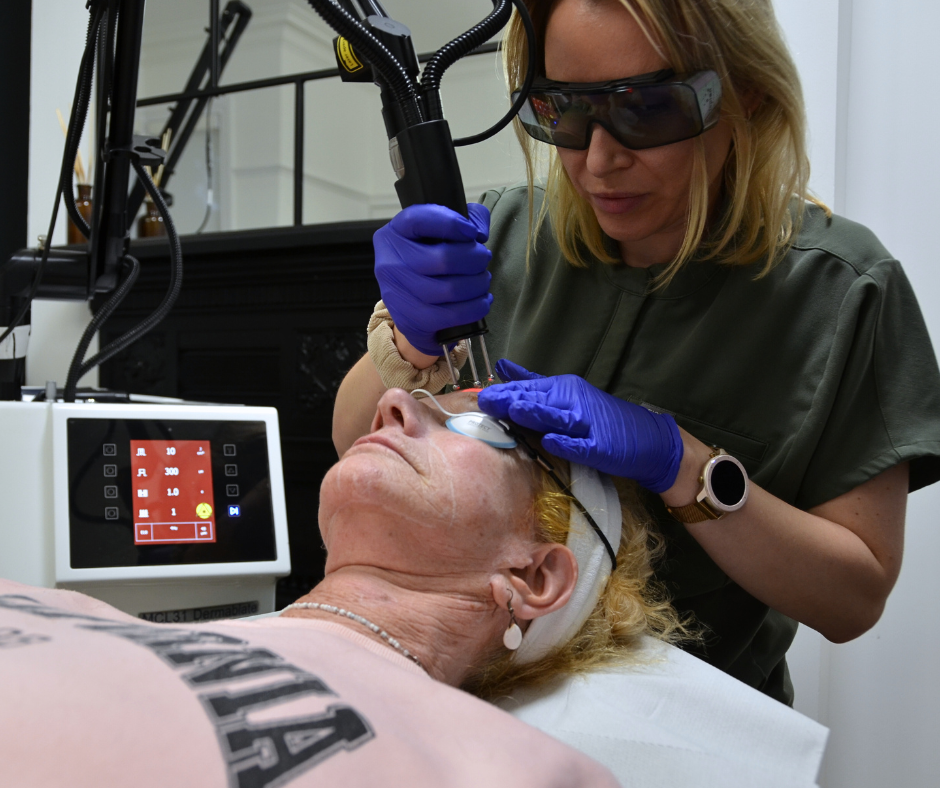
The question “is PicoStar better than PicoSure?” has become increasingly common as more advanced picosecond laser technologies emerge. Both devices are highly effective for pigmentation correction, tattoo removal, and skin rejuvenation, but they differ in engineering, wavelength options, and treatment comfort. Understanding how each system works can help determine which is more suitable for specific skin concerns.
PicoSure is one of the earliest and most widely recognised picosecond lasers, operating at a wavelength of 755 nm. It uses rapid, high-energy pulses to shatter pigment particles and stimulate collagen production without damaging surrounding tissue. PicoSure is particularly effective for pigmentation treatment, acne scar removal, and fine lines, as well as removing black, blue, and green tattoo inks.
PicoStar is a newer-generation picosecond laser platform designed for enhanced precision and comfort. It operates with dual wavelengths, 1064 nm and 532 nm, allowing it to target a broader range of pigment colours and skin types. Its ultra-short pulse duration and high peak power deliver energy efficiently, helping to reduce treatment time, minimise heat build-up, and improve comfort levels during procedures.
Both lasers deliver excellent results, but PicoStar offers a more versatile range due to its wavelength options and improved fluence control. It can treat deeper pigmentation, multicoloured tattoos, and a wider range of skin tones more safely. Meanwhile, PicoSure remains a strong performer for superficial pigment, melasma, and collagen stimulation.
In terms of comfort and recovery, patients often report that PicoStar feels slightly gentler, with less redness and downtime immediately post-treatment, thanks to its advanced pulse stability and cooling design.
Both systems are premium devices, but PicoStar represents the newer generation of picosecond technology. It offers faster pulse speeds, broader wavelength coverage, and enhanced comfort, making it particularly effective for diverse skin concerns and complex pigment or tattoo colours. However, the best choice ultimately depends on your skin type, goals, and the practitioner’s experience. When performed by a skilled specialist, either laser can deliver remarkable improvements in tone, texture, and clarity.
PicoStar delivers visible improvement in skin tone, texture, and clarity after just a few sessions. It effectively targets pigmentation, sun damage, acne scars, and tattoo ink by breaking particles into microscopic fragments that the body naturally clears away. Skin appears brighter, smoother, and more even with minimal downtime. Because of its precision and high peak power, PicoStar also stimulates collagen regeneration, leading to firmer, healthier-looking skin over time.
Not exactly. “Picosecond” refers to the speed of laser pulse delivery, one trillionth of a second, while PicoSure is a brand name of a specific picosecond laser device. In other words, PicoSure is one type of picosecond laser, but there are others, such as PicoStar and PicoWay. Each device uses slightly different wavelengths and technologies to target pigmentation, rejuvenate skin, or remove tattoos with exceptional precision.
Both PicoWay and PicoSure are advanced picosecond laser systems, but they have distinct advantages. PicoWay offers multiple wavelengths (1064 nm, 785 nm, and 532 nm), making it suitable for a wider range of pigmentation types, tattoo colours, and skin tones. PicoSure operates primarily at 755 nm, focusing on collagen stimulation and skin texture improvement. PicoWay’s versatility often makes it preferred for multicoloured tattoos and darker complexions, while PicoSure remains excellent for rejuvenation and pigmentation. The better option depends on individual skin goals and concerns.